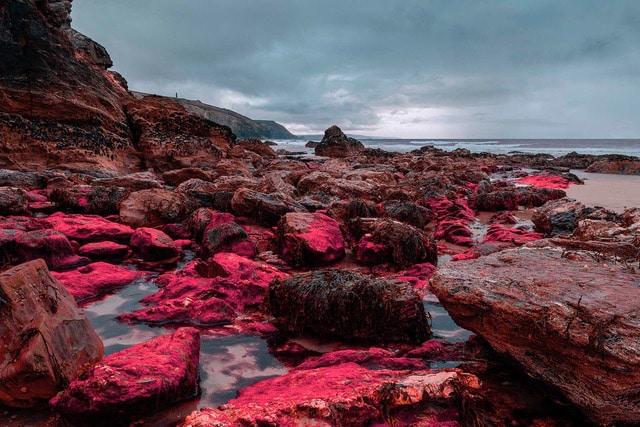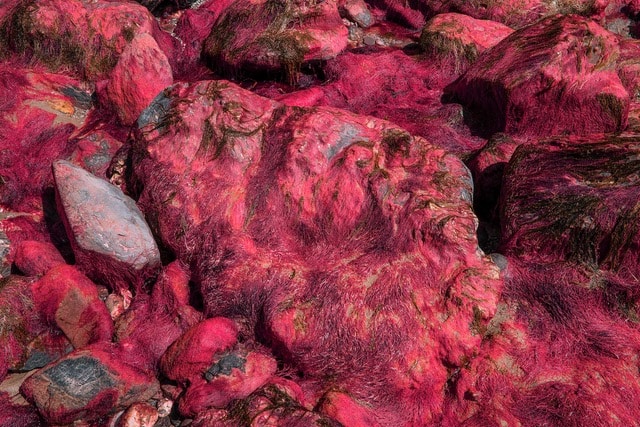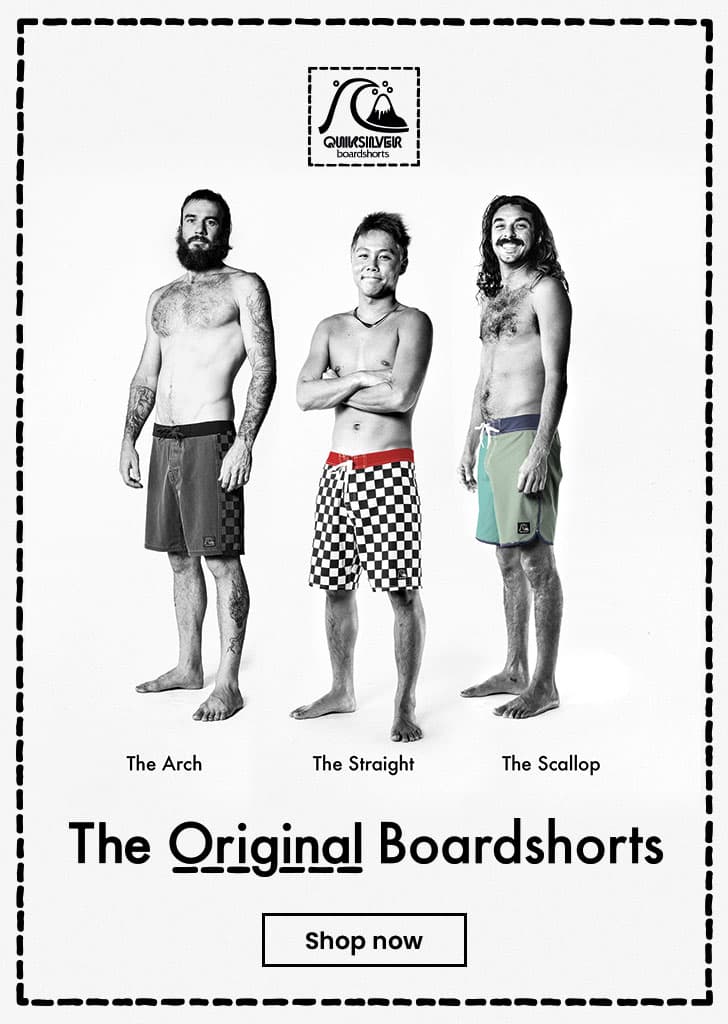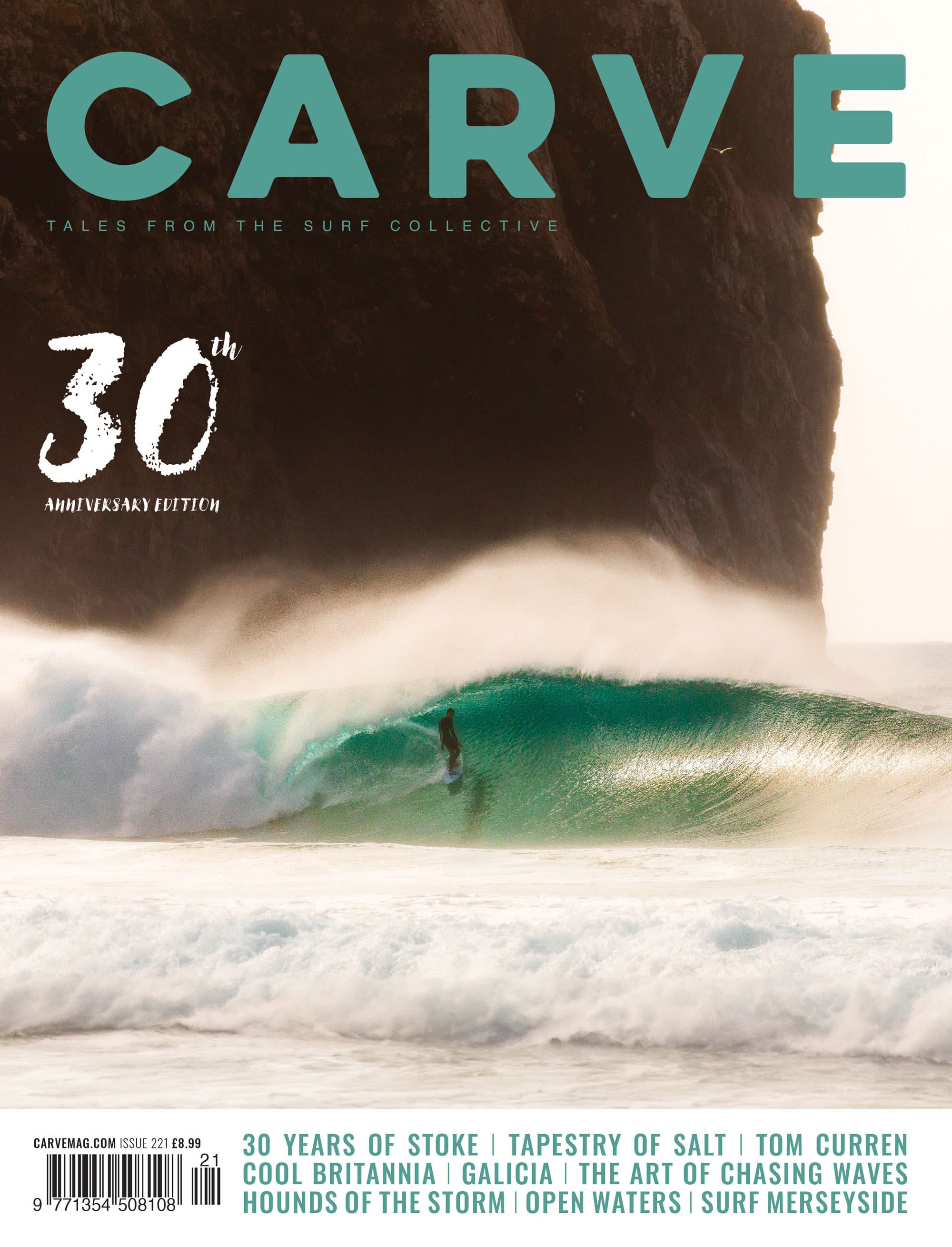
North Cornish coastline photographed under an imaginary scenario of invading red weed during and after the Covid-19 lockdown. Cornish based artist Andy Hughes explores virus paranoia through the eyes of 19th century author H.G.Wells, giving a fresh new perspective regarding the subject of waste, pathogens and the beach.
As the global pandemic continues to impact lives across the world, places like Cornwall which rely heavily on tourism continue to be affected greatly. The holiday season is now well underway, and many are heading to the coastlines of the UK rather than risk travelling abroad. As cramped beaches and overcrowding hit the national headlines this summer, concerns about increased waste and its effects on the environment have also resurfaced with a vengeance. During the lockdown, Cornwall based artist Andy Hughes walked his local beaches. These familiar places seemed to him to be different in some way. With fewer people around he imagined a new world, how might the beaches of Cornwall thrive in the future with fewer or more visitors?

A surreal version of the common seaweed called Gutweed. Normally vibrant green Andy Hughes saw it’s beauty in a new light, he imagined it coloured red, not vibrant green thereby taking on a new contemporary relevance.
Inspired by the H. G. Wells novel The War of the Worlds, Hughes has created a new series of photographs. Well’s imagined an advanced but ailing alien race struggling to survive on dying planet. For the aliens, the Earth seemed the perfect place to colonise, rich with life and covered in plentiful water. Along with the alien invasion came a weird and strange plant called the red creeper or the red weed. When exposed to water, it grew and reproduced flooding the countryside, clogging streams and rivers. Like the red weed, Covid-19 has invaded lives and destroyed economies and will through the increased production of single-use throw-away items of PPE potentially wreak new havoc on the wider environment.
All across the world, the plastic pollution problem has become very visible. Hughes has travelled far and wide making work about this subject matter for over 25 years. Covid-19 has given him a new perspective regarding the subject of waste, pathogens and the beach. Hughes’ history of photographing plastic combined with his longing to become immersed back in the watery world of the sea during the pandemic became tainted with virus paranoia and end of the world ideas.
When the lockdown measures were relaxed, he revived his coastal walks amongst the vibrant green seaweed called Gutweed (Ulva intestinalis). He saw it’s beauty in a new light, but also felt its invading presence. He imagined it coloured red, not vibrant green thereby taking on new contemporary relevance. His photographs were created using infra-red techniques, they explore a sense of the creeping red weed imagined by wells over 100 years ago and the parallels between fiction and fact. In Well’s story, the earth and all its inhabitants were saved by the “the littlest things which God, in His wisdom, had put upon this Earth”. Many of us now put hope in science to deliver a vaccine, and that humanity might change its behaviour helping to shape a better world for all life to flourish upon this beautiful earth.





